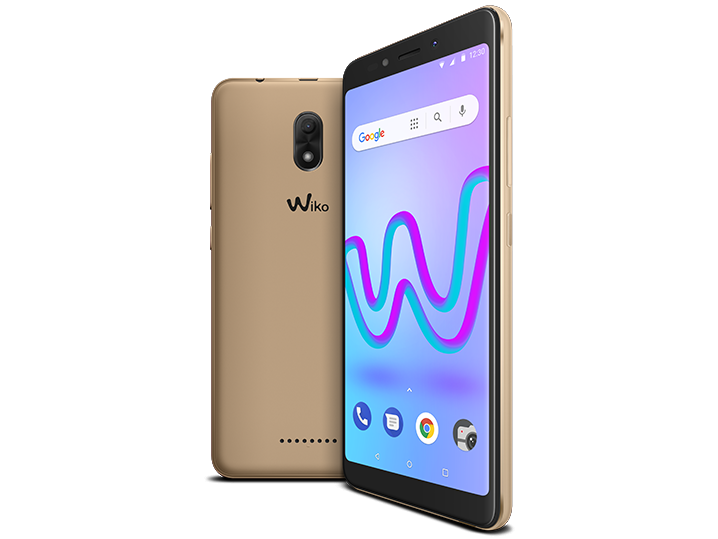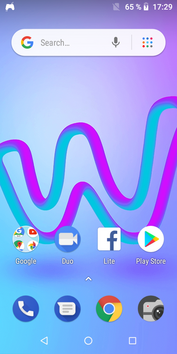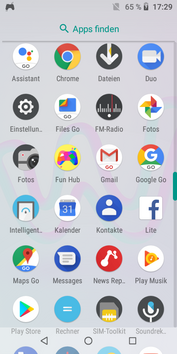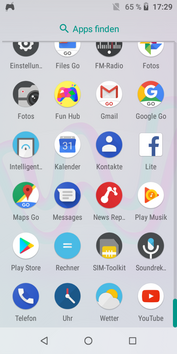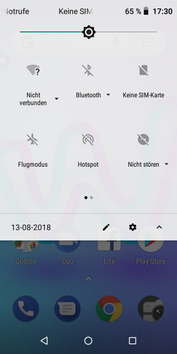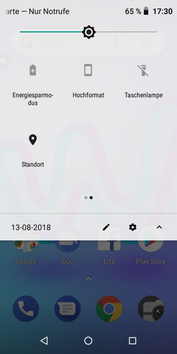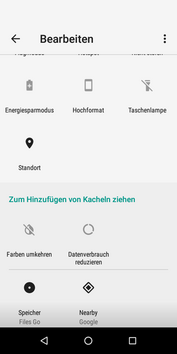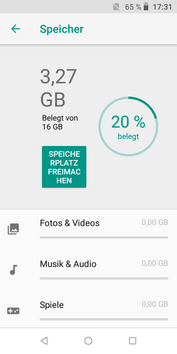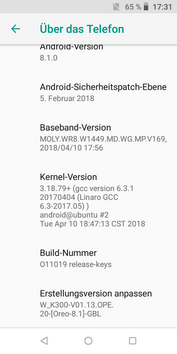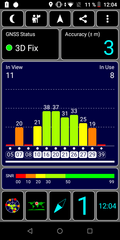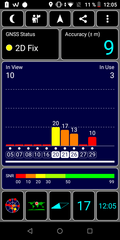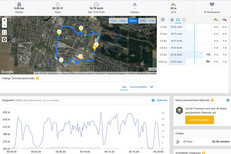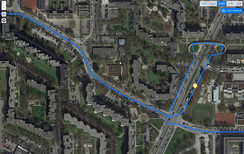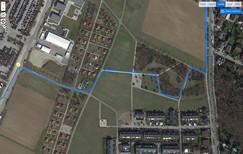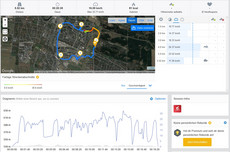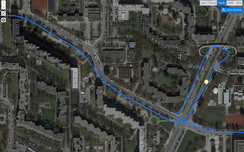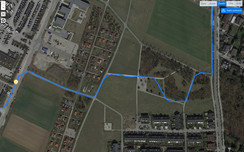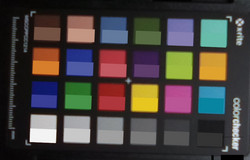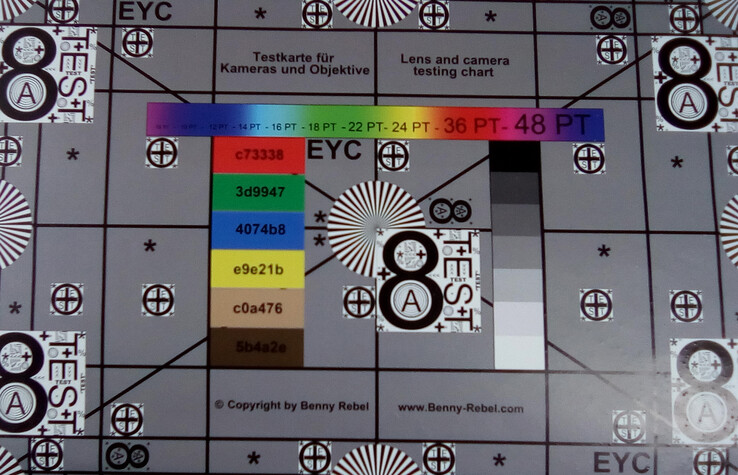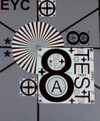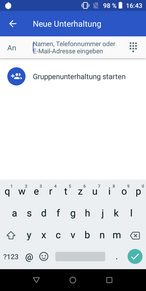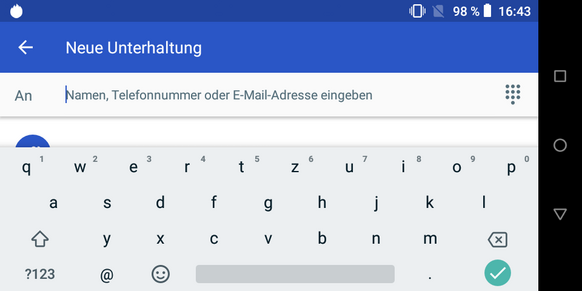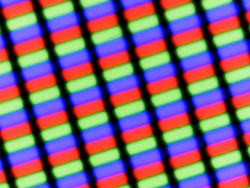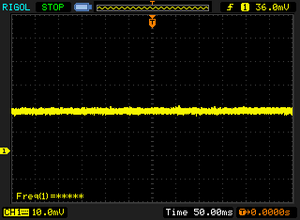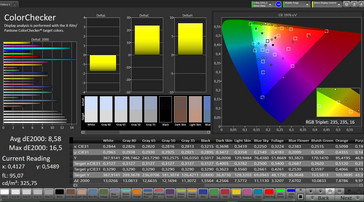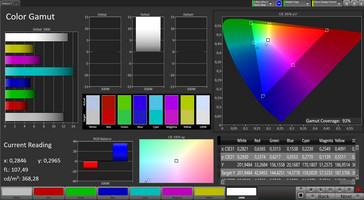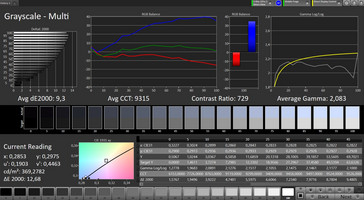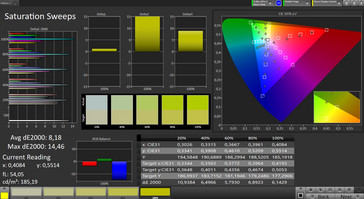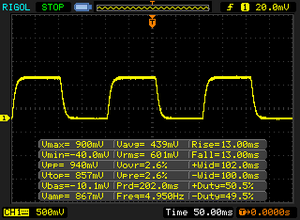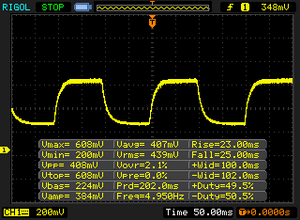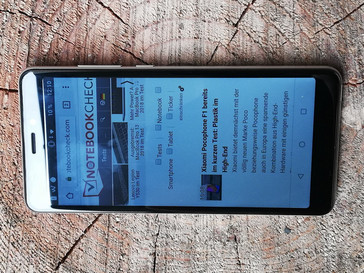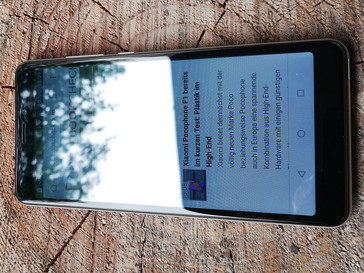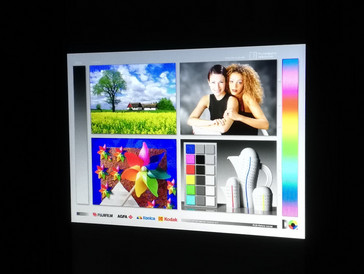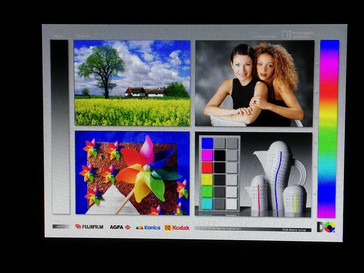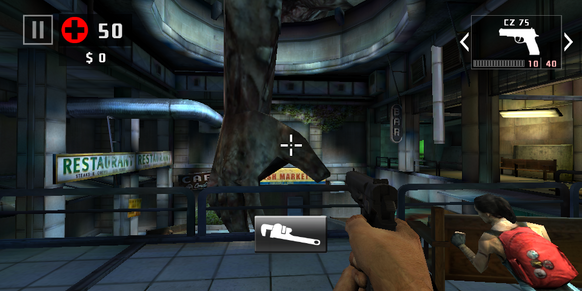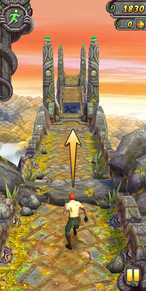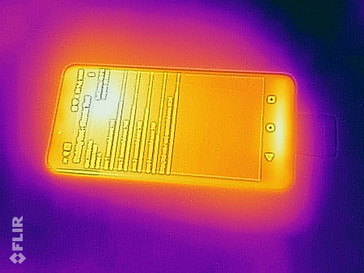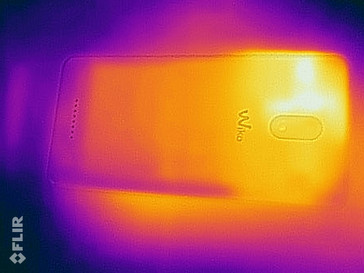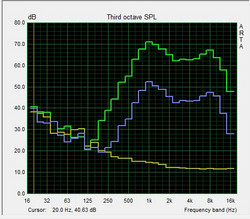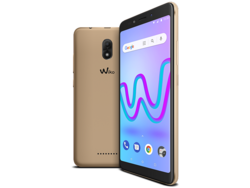Wiko Jerry3 Smartphone Review
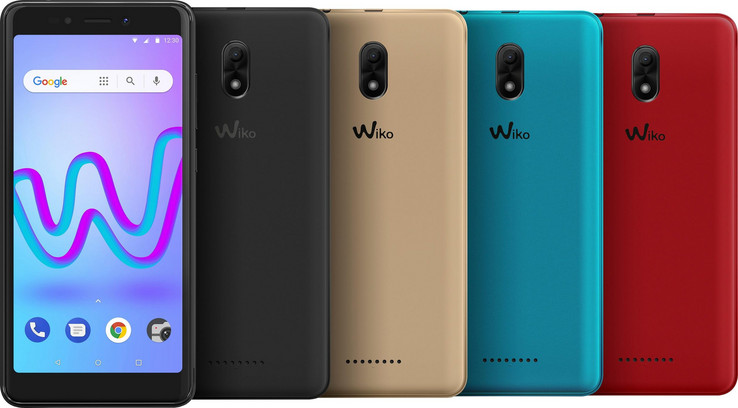
The Jerry3 is Wiko’s latest budget smartphone and expands the French manufacturer’s already plentiful smartphone offerings. The Jerry3 retails for €90 (~$105), but Wiko also sells more expensive devices such as the €300 (~$349) Wiko View 2 Pro or the €170 (~$198) Wiko View 2 Pro among others.
Wiko aims the Jerry3 primarily at those who have simple demands from smartphones, as demonstrated by equipping the device with a MediaTek MT6580M SoC, an outdated chip that integrates an ARM Mali-400 MP2 GPU. This focus on delivering a budget device is compounded by equipping the Jerry3 with 1 GB of RAM and 16 GB of eMMC flash storage. This low-end set of hardware should be enough to run Android Go smoothly though.
We have chosen to compare the Jerry3 against the CUBOT R11, the Xiaomi Redmi 5A, the Nokia 1 and the Honor 7A. It is worth bearing in mind that while our comparison devices and the Jerry3 are similarly priced, our comparison devices are noticeably more powerful on paper.
Please note: The reboots and app crashes that we mention later in this review happened with both our test device and the replacement that Wiko also supplied. Since the same issues persisted across both devices we must warn buyers that potentially every Jerry3 will have the same issues as the ones that we have used.
Case
The Jerry3 has a plastic case that is available in black, green, gold or red. The back case is removable, the removal of which gives access to the battery, two micro-SIM card slots and a microSD card slot. The simple rear-facing camera is centered near the top of the back case while the single speaker is at the opposite end. The power button and volume rocker sit firmly in place on the right-hand side of the device. Wiko has placed the 3.5 mm jack and the Micro USB port on the top side of the Jerry3 too.
The Jerry3 is a well-made device that feels robust on first impressions. The case is strong and should easily withstand the stresses and strains associated with daily use. Moreover, the gaps between materials are even throughout while there is a smooth transition between the display and the case.
Connectivity
The Jerry3 is equipped with a MediaTek MT6580M SoC, an ARM Mali-400 MP2 GPU, 1 GB of RAM and 16 GB of eMMC flash memory, the latter of which can be expanded with up to a 64 GB micro SD card. The Jerry3 also has dedicated SIM and microSD card slots so you can use two micro-SIMs and a microSD card should you need to. This makes the Jerry3 considerably more functional than other Dual-SIM devices with microSD card expansion that only have space for either two SIMs or one SIM and a microSD card.
Wiko has equipped the Jerry3 with a Micro USB port that operates at 2.0 speeds. This is still standard issue for many budget devices, unlike the USB Type-C with which most new mid-range devices are equipped. The Jerry3 is also equipped with a 3.5 mm headphone jack for wired audio output.
Software
The Jerry3 runs Android Oreo 8.1 Go edition. Android Go uses fewer resources than its full-fat sibling and so can run on older and low-end hardware. Our test device provides a largely stock Android Go experience that is supplemented by a few third-party apps. The Jerry3 also supports multiple user accounts should there be more than one user of the device.
Unfortunately, the system has issues running Android Go, despite its low hardware requirements. Our test device frequently restarted during testing, the cause of which we could not diagnose despite our best endeavors. Moreover, the system occasionally took a while to respond to inputs and when it did, sometimes the keyboard refused to appear in the built-in browser. Additionally, our test device would occasionally not switch to landscape mode either.
Overall, the software is riddled with frustrating issues which prevent the Jerry3 from being used as a daily driver.
Communication & GPS
The Jerry3 cannot connect to LTE networks as it lacks an LTE supporting modem. This means that the device can only connect to GSM or 3G networks and not 4G ones. Nevertheless, our test device retained good mobile network reception throughout our tests despite this compromise though. The Jerry3 also supports Bluetooth 4.1 and IEEE 802.11 b, g and n Wi-Fi.
Our test device achieved below average transfer speeds in iperf3 Client tests. The Jerry3 scored 12.5 MBit/s in the receive test and 14.6 MBit/s in the transmission test, which puts the device in the last place, behind all our comparison devices. By contrast, the slowest of our comparison devices, the Honor 7A, achieved around 45 MBit/s in both tests.
| Networking | |
| iperf3 transmit AX12 | |
| Cubot R11 | |
| Nokia 1 | |
| Xiaomi Redmi 5A | |
| Honor 7A | |
| Wiko Jerry 3 | |
| iperf3 receive AX12 | |
| Cubot R11 | |
| Nokia 1 | |
| Xiaomi Redmi 5A | |
| Honor 7A | |
| Wiko Jerry 3 | |
Measuring with GPS Test, the Jerry3 achieves a location fix with up to three meters (~10 ft) accuracy outdoors and up to nine meters (~30 ft) indoors. This degree of location accuracy is relatively good for such a budget device.
We took the Jerry3 on a bike ride to test its location accuracy against a professional navigation device, the Garmin Edge 520. Our test device performed relatively well, but deviated by 130 meters (~142 yd) over a 5.65 km (~3.5) ride. The discrepancy between the total distances recorded by the two devices is mainly because the Jerry3 tended to place us next to our actual route and failed to accurately record any corners or minor changes in direction. Overall, the Jerry3 should be suitable for all general navigation tasks, but we would recommend choosing a more accurate device when higher precision is required.
Telephone Function & Call Quality
The standard set of Google apps handle telephony and provide easy access to call history, contacts and telephone numbers. Both sides of a call are intelligible, but the maximum call volume is rather quiet. The microphone reliably filters out background noise too.
The included headphones are louder and provide better background noise filtering than both the earpiece and handsfree. We would therefore recommend using headphones for a better call experience.
Cameras
The Jerry3 is equipped with 5 MP front and rear-facing cameras both of which take mediocre photos. The front-facing camera struggles to adequately capture detail and cannot always keep objects in focus. The front-facing sensor lacks autofocus or image stabilization, so most photos look somewhat blurry, even in good lighting. Only the steadiest of hands will be able to take a selfie using the Jerry3 without any blur. Moreover, the default camera app has few customization options and only allows the resolution to be changed and a timer to be set.
The rear-facing camera fares little better. Panoramic photos look ok, but are often underexposed. The rear-facing sensor is much better than the front-facing sensor at focussing on objects though. However, details are largely missing from dark areas of photos and it is often difficult to distinguish between objects that are poorly lit. The same is true when taking macro photos, whereby bright areas are noticeably overexposed and dark areas lack any detail. Moreover, colors look generally washed out and taking sharp photos requires a steady hand just as with the front-facing camera. Perhaps predictably the rear-facing camera struggles in low-light conditions, the results of which are blurry, underexposed and lacking any detail. The default camera app offers no options to change exposure times or ISO levels either, which could potentially have helped take better night photos.
The Jerry3 takes terrible videos. Colors are washed out and the lack of image stabilization makes everything blurry.
We also subjected the Jerry3 to a more objective camera test using ColorChecker Passport. We conduct this test to identify how accurately a device reproduces colors. Comparing our test device against the reference colors demonstrates that the Jerry3 reproduces most colors too darkly, particularly black and gray tones. The only exception is with turquoise, which our test device captures too brightly. Overall, the Jerry3 cannot accurately reproduce any color on our chart. We struggled with taking a clear photo of the ColorChecker Passport chart too.
Our test device also performed equally poorly under controlled lighting conditions. We have included a photo of our test chart that we took with the Jerry3, which demonstrates the extent to which the rear camera sensor struggles with image stabilization and capturing details like fine lines.
Accessories & Warranty
The Jerry3 comes with a modular charger, a USB Type-A to Micro USB cable, a SIM tool and a set of headphones. Wiko does not sell any other accessories specific to the Jerry3, but there are some third-party suppliers that do.
The Jerry3 comes with a twenty-four month manufacturer’s warranty. Please see our Guarantees, Return policies and Warranties FAQ for country-specific information.
Input Devices & Operation
The Jerry3 uses Google GBoard as its default keyboard, which operates just as on other devices. It is worth keeping in mind that the touchscreen sometimes responds inaccurately. We found during our tests that sometimes we needed to press next to the button we intended to press before our test device would register the input. Moreover, the keyboard also occasionally failed to appear despite having selected an input box. This could be an issue with just the keyboard app, but we have not experienced the issue on other devices.
The positional sensor is also unreliable and occasionally refuses to switch to landscape mode.
Display
The Jerry3 has a 5.45-inch IPS display that has a 960x480 native resolution and a 2:1 aspect ratio. It is worth bearing in mind that you may see a 2:1 aspect ratio referred to as 18:9; they are the same thing. Our test device achieved an average maximum brightness of 367.2 cd/m² when measured with X-Rite i1Pro2, which is only better than the Nokia 1 of our comparison devices. Our test device has a 90% uniformly bright display too, which is better than all our comparison devices.
| |||||||||||||||||||||||||
Brightness Distribution: 90 %
Center on Battery: 0.4 cd/m²
Contrast: 925:1 (Black: 0.4 cd/m²)
ΔE ColorChecker Calman: 8.58 | ∀{0.5-29.43 Ø4.77}
ΔE Greyscale Calman: 9.3 | ∀{0.09-98 Ø5}
92% sRGB (Calman 2D)
Gamma: 2.083
CCT: 9315 K
| Wiko Jerry 3 IPS, 960x480, 5.5" | Cubot R11 IPS, 1440x720, 5.5" | Xiaomi Redmi 5A IPS, 1280x720, 5" | Nokia 1 IPS, 854x480, 4.5" | Honor 7A IPS, 1440x720, 5.7" | |
|---|---|---|---|---|---|
| Screen | -11% | 7% | 32% | 40% | |
| Brightness middle (cd/m²) | 370 | 428 16% | 503 36% | 256 -31% | 417 13% |
| Brightness (cd/m²) | 367 | 401 9% | 499 36% | 251 -32% | 395 8% |
| Brightness Distribution (%) | 90 | 72 -20% | 84 -7% | 89 -1% | 88 -2% |
| Black Level * (cd/m²) | 0.4 | 0.88 -120% | 0.73 -83% | 0.12 70% | 0.18 55% |
| Contrast (:1) | 925 | 486 -47% | 689 -26% | 2133 131% | 2317 150% |
| Colorchecker dE 2000 * | 8.58 | 6.29 27% | 5.44 37% | 4.82 44% | 6.46 25% |
| Colorchecker dE 2000 max. * | 16.5 | 13.2 20% | 10.01 39% | 11.75 29% | 10.72 35% |
| Greyscale dE 2000 * | 9.3 | 6.9 26% | 6.8 27% | 5.2 44% | 5.8 38% |
| Gamma | 2.083 106% | 2.718 81% | 2.451 90% | 2.3 96% | 2.423 91% |
| CCT | 9315 70% | 7296 89% | 6590 99% | 7107 91% | 7839 83% |
* ... smaller is better
Screen Flickering / PWM (Pulse-Width Modulation)
| Screen flickering / PWM not detected | ≤ 20 % brightness setting | ||
In comparison: 53 % of all tested devices do not use PWM to dim the display. If PWM was detected, an average of 8084 (minimum: 5 - maximum: 343500) Hz was measured. | |||
Our test device has a 0.4 cd/m² black value, which is on par with the average of our comparison devices, but significantly higher than both the Nokia 1 and Honor 7A. A low black value contributes to a high contrast ratio, so it is no surprise that both devices have considerably higher contrast ratios than the Jerry3. While our test device achieves an unimpressive 925:1 contrast ratio, both the Nokia 1 and the Honor 7A achieved contrast ratios of 2,133:1 and 2,317:1 respectively.
Moreover, CalMAN analysis software highlights that our test device’s display has a strong blue tint to it.
Display Response Times
| ↔ Response Time Black to White | ||
|---|---|---|
| 26 ms ... rise ↗ and fall ↘ combined | ↗ 13 ms rise | |
| ↘ 13 ms fall | ||
| The screen shows relatively slow response rates in our tests and may be too slow for gamers. In comparison, all tested devices range from 0.1 (minimum) to 240 (maximum) ms. » 61 % of all devices are better. This means that the measured response time is worse than the average of all tested devices (20.2 ms). | ||
| ↔ Response Time 50% Grey to 80% Grey | ||
| 48 ms ... rise ↗ and fall ↘ combined | ↗ 23 ms rise | |
| ↘ 25 ms fall | ||
| The screen shows slow response rates in our tests and will be unsatisfactory for gamers. In comparison, all tested devices range from 0.165 (minimum) to 636 (maximum) ms. » 82 % of all devices are better. This means that the measured response time is worse than the average of all tested devices (31.6 ms). | ||
The Jerry3 has strong viewing angles thanks to its IPS display. Our test device exhibits no loss in brightness nor any image distortion even at acute angles. While the display remains readable from practically any angle, in theory, the issues we mentioned about using the Jerry3 outdoors, limit the device’s viewing angles, particularly on sunny days.
Performance
The Jerry3 is powered by a MediaTek MT6580M SoC that integrates both a quad-core ARM Cortex A7 processor and an ARM Mali-400 MP2 GPU. The MT6580M is now over two and a half years old, but it should still be powerful enough to run Android Go. As mentioned above, frequent restarts plagued our test device, but this does not affect the wider usability of the MT6580M on an Android Go platform. The device is also equipped with 1 GB of RAM and 16 GB of eMMC flash storage.
Our test device scored comparatively poorly in most benchmarks and only matched the CUBOT R11 and the Nokia 1 of our comparison devices. The Jerry3’s CPU benchmark scores are on par with the average of MT6580M powered devices that we have currently tested too.
The frequent rebooting meant that we could not assess how well the Jerry3 performed over a long period of daily use. The device felt sluggish, which was compounded by the frequent input lag that we also experienced. Overall, the Jerry3 would be difficult to use daily; the device would frequently restart and feel slow when it did work.
| AnTuTu v6 - Total Score (sort by value) | |
| Wiko Jerry 3 | |
| Cubot R11 | |
| Xiaomi Redmi 5A | |
| Nokia 1 | |
| Honor 7A | |
| Average Mediatek MT6580M (15185 - 25237, n=10) | |
| AnTuTu v7 - Total Score (sort by value) | |
| Wiko Jerry 3 | |
| Cubot R11 | |
| Xiaomi Redmi 5A | |
| Nokia 1 | |
| Honor 7A | |
| Average Mediatek MT6580M (17073 - 21088, n=4) | |
| PCMark for Android | |
| Work performance score (sort by value) | |
| Wiko Jerry 3 | |
| Cubot R11 | |
| Xiaomi Redmi 5A | |
| Nokia 1 | |
| Honor 7A | |
| Average Mediatek MT6580M (2516 - 3041, n=12) | |
| Work 2.0 performance score (sort by value) | |
| Wiko Jerry 3 | |
| Xiaomi Redmi 5A | |
| Nokia 1 | |
| Honor 7A | |
| Average Mediatek MT6580M (0 - 0, n=2) | |
| 3DMark | |
| 1280x720 offscreen Ice Storm Unlimited Score (sort by value) | |
| Wiko Jerry 3 | |
| Cubot R11 | |
| Xiaomi Redmi 5A | |
| Honor 7A | |
| Average Mediatek MT6580M (2841 - 2946, n=12) | |
| 1280x720 offscreen Ice Storm Unlimited Graphics Score (sort by value) | |
| Wiko Jerry 3 | |
| Cubot R11 | |
| Xiaomi Redmi 5A | |
| Honor 7A | |
| Average Mediatek MT6580M (2396 - 2485, n=12) | |
| 1280x720 offscreen Ice Storm Unlimited Physics (sort by value) | |
| Wiko Jerry 3 | |
| Cubot R11 | |
| Xiaomi Redmi 5A | |
| Honor 7A | |
| Average Mediatek MT6580M (7498 - 8913, n=12) | |
| GFXBench (DX / GLBenchmark) 2.7 | |
| T-Rex Onscreen (sort by value) | |
| Wiko Jerry 3 | |
| Cubot R11 | |
| Xiaomi Redmi 5A | |
| Nokia 1 | |
| Honor 7A | |
| Average Mediatek MT6580M (4.4 - 12, n=12) | |
| Average of class Smartphone (12 - 166, n=153, last 2 years) | |
| 1920x1080 T-Rex Offscreen (sort by value) | |
| Wiko Jerry 3 | |
| Cubot R11 | |
| Xiaomi Redmi 5A | |
| Nokia 1 | |
| Honor 7A | |
| Average Mediatek MT6580M (4.1 - 11, n=12) | |
| Average of class Smartphone (22 - 954, n=153, last 2 years) | |
Our test device finished consistently at or near the bottom of our comparison devices in browser benchmarks. The Jerry3’s browser benchmark results are on par with the CUBOT R11 and the Nokia 1, but our test device cannot compete with the likes of the Xiaomi Redmi 5A. In daily use, web browsing on the Jerry3 is a chore. Websites take a while to load and even simple browsing causes spontaneous reboots.
| JetStream 1.1 - Total Score | |
| Honor 7A (Chrome 67) | |
| Xiaomi Redmi 5A (Chrome 67) | |
| Average Mediatek MT6580M (10.8 - 14.5, n=10) | |
| Cubot R11 (Chrome 67) | |
| Nokia 1 (Chrome 66) | |
| Wiko Jerry 3 (Chrome 67) | |
| Octane V2 - Total Score | |
| Average of class Smartphone (2228 - 126661, n=194, last 2 years) | |
| Honor 7A (Chrome 67) | |
| Xiaomi Redmi 5A (Chrome 67) | |
| Cubot R11 (Chrome 67) | |
| Average Mediatek MT6580M (1645 - 2280, n=10) | |
| Nokia 1 (Chrome 66) | |
| Wiko Jerry 3 (Chrome 67) | |
| Mozilla Kraken 1.1 - Total | |
| Cubot R11 (Chrome 67) | |
| Wiko Jerry 3 (Chrome 67) | |
| Nokia 1 (Chrome 66) | |
| Average Mediatek MT6580M (14579 - 21257, n=11) | |
| Honor 7A (Chrome 67) | |
| Xiaomi Redmi 5A (Chrome 67) | |
| Average of class Smartphone (257 - 28190, n=154, last 2 years) | |
* ... smaller is better
While internal memory access speeds are comparable with the cheaper of our comparison devices, microSD card performance is significantly below what the Redmi 5A and the Honor 7A achieve. In practice, this means that file transfers onto or from the Jerry3 will take considerably longer than on either of the aforementioned devices.
| Wiko Jerry 3 | Cubot R11 | Xiaomi Redmi 5A | Nokia 1 | Honor 7A | Average 16 GB eMMC Flash | Average of class Smartphone | |
|---|---|---|---|---|---|---|---|
| AndroBench 3-5 | -7% | 231% | 17% | 237% | 116% | 2369% | |
| Sequential Read 256KB (MB/s) | 117.1 | 135.8 16% | 293.8 151% | 208.3 78% | 254.8 118% | 164.5 ? 40% | 2235 ? 1809% |
| Sequential Write 256KB (MB/s) | 50.8 | 52 2% | 49.86 -2% | 51.8 2% | 72.5 43% | 43 ? -15% | 1871 ? 3583% |
| Random Read 4KB (MB/s) | 24.18 | 22.1 -9% | 42.32 75% | 25.7 6% | 39.2 62% | 21.7 ? -10% | 297 ? 1128% |
| Random Write 4KB (MB/s) | 11.23 | 10.8 -4% | 9.28 -17% | 9.1 -19% | 9.4 -16% | 8.08 ? -28% | 343 ? 2954% |
| Sequential Read 256KB SDCard (MB/s) | 16 ? | 10.8 ? -32% | 84.9 ? 431% | 84.9 ? 431% | 59.1 ? 269% | ||
| Sequential Write 256KB SDCard (MB/s) | 7.4 ? | 6.38 ? -14% | 62.6 ? 746% | 65.4 ? 784% | 39.8 ? 438% |
Games
The Jerry3 is powerful enough to play casual or simple games such as “Dead Trigger 2” but even older games like “Temple Run 2” suffered from occasional drops in framerates. Moreover, our test device took a long time to load “Dead Trigger 2”.
Unfortunately, the inaccuracies of the touchscreen and positional sensor make it practically impossible to play games.
Emissions
Temperature
The Jerry3 is a relatively hot device even at idle. Surface temperatures reach up to 36 °C (~97 °F) at idle and the entire device averages above 30 °C (~97 °F). Predictably surface temperatures increase significantly when the device operates under full load. Our test device reached a maximum of 43.9 °C (~111 °F) in the area around the rear-facing camera. Similarly, our test device averaged around 37 °C (~99 °F) under full load.
The Jerry3 will feel hot in daily use, but not worryingly so. The device should not thermal throttle, but it will frequently restart.
(±) The maximum temperature on the upper side is 41 °C / 106 F, compared to the average of 35.2 °C / 95 F, ranging from 21.9 to 247 °C for the class Smartphone.
(±) The bottom heats up to a maximum of 43.9 °C / 111 F, compared to the average of 34 °C / 93 F
(±) In idle usage, the average temperature for the upper side is 33.7 °C / 93 F, compared to the device average of 32.9 °C / 91 F.
Speakers
The Jerry3 has a single speaker at the bottom of the rear case. The speaker sounds balanced and accurately reproduces a broad range of tones. The speaker is good enough for music playback or for listening to more complex media content. Our test device reached just over 70 dB(A) in our tests, which should be enough to drown out moderate ambient noise. We would have liked a louder speaker though.
The included headphones are good enough for music playback too, and get much louder than the speaker. Headphone jacks plug firmly into the 3.5 mm jack with a soft click sound. We had no issues with headphone jacks accidentally disconnecting throughout our tests.
Wiko Jerry 3 audio analysis
(±) | speaker loudness is average but good (77.8 dB)
Bass 100 - 315 Hz
(-) | nearly no bass - on average 30.3% lower than median
(±) | linearity of bass is average (10.2% delta to prev. frequency)
Mids 400 - 2000 Hz
(±) | higher mids - on average 6% higher than median
(±) | linearity of mids is average (8.5% delta to prev. frequency)
Highs 2 - 16 kHz
(+) | balanced highs - only 1.7% away from median
(+) | highs are linear (3.5% delta to prev. frequency)
Overall 100 - 16.000 Hz
(±) | linearity of overall sound is average (25.9% difference to median)
Compared to same class
» 65% of all tested devices in this class were better, 6% similar, 29% worse
» The best had a delta of 11%, average was 35%, worst was 134%
Compared to all devices tested
» 79% of all tested devices were better, 4% similar, 17% worse
» The best had a delta of 4%, average was 24%, worst was 134%
Nokia 1 audio analysis
(±) | speaker loudness is average but good (79.4 dB)
Bass 100 - 315 Hz
(-) | nearly no bass - on average 61.2% lower than median
(+) | bass is linear (0% delta to prev. frequency)
Mids 400 - 2000 Hz
(-) | nearly no mids - on average 61.2% lower than median
(+) | mids are linear (0% delta to prev. frequency)
Highs 2 - 16 kHz
(-) | nearly no highs - on average 61.2% lower than median
(+) | highs are linear (0% delta to prev. frequency)
Overall 100 - 16.000 Hz
(-) | overall sound is not linear (127.8% difference to median)
Compared to same class
» 98% of all tested devices in this class were better, 2% similar, 0% worse
» The best had a delta of 11%, average was 35%, worst was 134%
Compared to all devices tested
» 99% of all tested devices were better, 1% similar, 0% worse
» The best had a delta of 4%, average was 24%, worst was 134%
Battery Life
Power Consumption
The Jerry3 is a relatively efficient device. Our test device consumes less power than all our comparison devices except for the Honor 7A. Likewise, the Jerry3 is around 4% more efficient than the average of MT6580M powered devices that we have currently tested. It is worth noting that the Jerry3 consumed considerably more as an average under load than our comparison devices. This average power consumption under load is on par with other MT6580M powered devices though.
The included 5-W charger does not support quick charging and takes around five hours to fully recharge our test device.
| Off / Standby | |
| Idle | |
| Load |
|
Key:
min: | |
| Wiko Jerry 3 2500 mAh | Cubot R11 2800 mAh | Xiaomi Redmi 5A 3000 mAh | Nokia 1 2150 mAh | Honor 7A 3000 mAh | Average Mediatek MT6580M | Average of class Smartphone | |
|---|---|---|---|---|---|---|---|
| Power Consumption | 5% | 14% | 17% | -8% | 5% | -14% | |
| Idle Minimum * (Watt) | 1 | 0.9 10% | 1.2 -20% | 0.9 10% | 1.3 -30% | 0.805 ? 19% | 0.847 ? 15% |
| Idle Average * (Watt) | 1.5 | 1.5 -0% | 1.5 -0% | 1.5 -0% | 1.6 -7% | 1.736 ? -16% | 1.448 ? 3% |
| Idle Maximum * (Watt) | 2.3 | 2.2 4% | 1.8 22% | 2 13% | 2.9 -26% | 2.1 ? 9% | 1.633 ? 29% |
| Load Average * (Watt) | 5 | 4.6 8% | 2.9 42% | 3.5 30% | 3.7 26% | 4.82 ? 4% | 6.96 ? -39% |
| Load Maximum * (Watt) | 6.3 | 6 5% | 4.8 24% | 4.3 32% | 6.4 -2% | 5.68 ? 10% | 11.3 ? -79% |
* ... smaller is better
Battery Life
The Jerry3 has a 2,500 mAh battery which lasted for six-hours and thirty-four minutes in our practical Wi-Fi battery life test. We conduct this test by running a script that simulates the load required to render websites. This runtime is considerably shorter than our comparison devices. The Redmi 5A lasted an extra ten hours in this test with a 20% larger battery. Likewise, the Nokia 1 lasted nearly three hours longer with around a 15% smaller battery.
Thanks to the removable battery it is possible to use a second or third battery when the first runs out. However, this requires spending more on additional batteries that you must then carry with you.
| Wiko Jerry 3 2500 mAh | Cubot R11 2800 mAh | Xiaomi Redmi 5A 3000 mAh | Nokia 1 2150 mAh | Honor 7A 3000 mAh | |
|---|---|---|---|---|---|
| Battery runtime | |||||
| WiFi v1.3 (h) | 6.6 | 10.6 61% | 16.8 155% | 9.2 39% | 11 67% |
Pros
Cons
Verdict
The Wiko Jerry3 could be suitable for those who have low demands of their smartphones and who are looking for something cheap. The device is well priced at €90 (~$105) and offers good hardware and performance for the money.
The Wiko Jerry3 would be an affordable budget device that we would recommend but for its instability and frequent restarts.
However, the Jerry3 has some serious shortcomings that render the device practically unusable. Both our test device and its replacement frequently spontaneously restarted for reasons that we could not discern. Furthermore, the touchscreen and the positional sensor are frustratingly inaccurate. The lack of LTE and low display brightness feel like a missed opportunity too.
We cannot recommend buying the Jerry3 for the litany of major issues that we experienced with both our test device and its replacement.
Wiko Jerry 3
- 08/16/2018 v6 (old)
Mike Wobker




